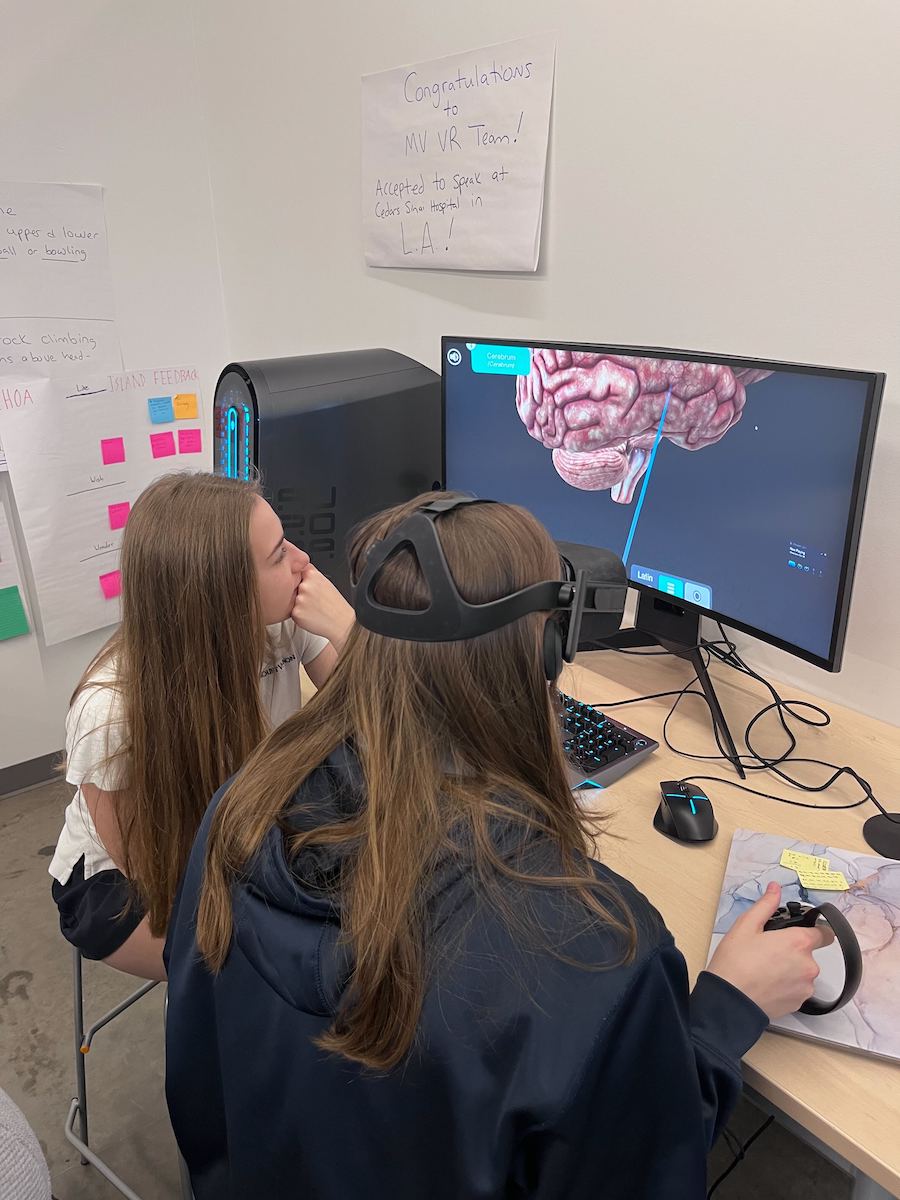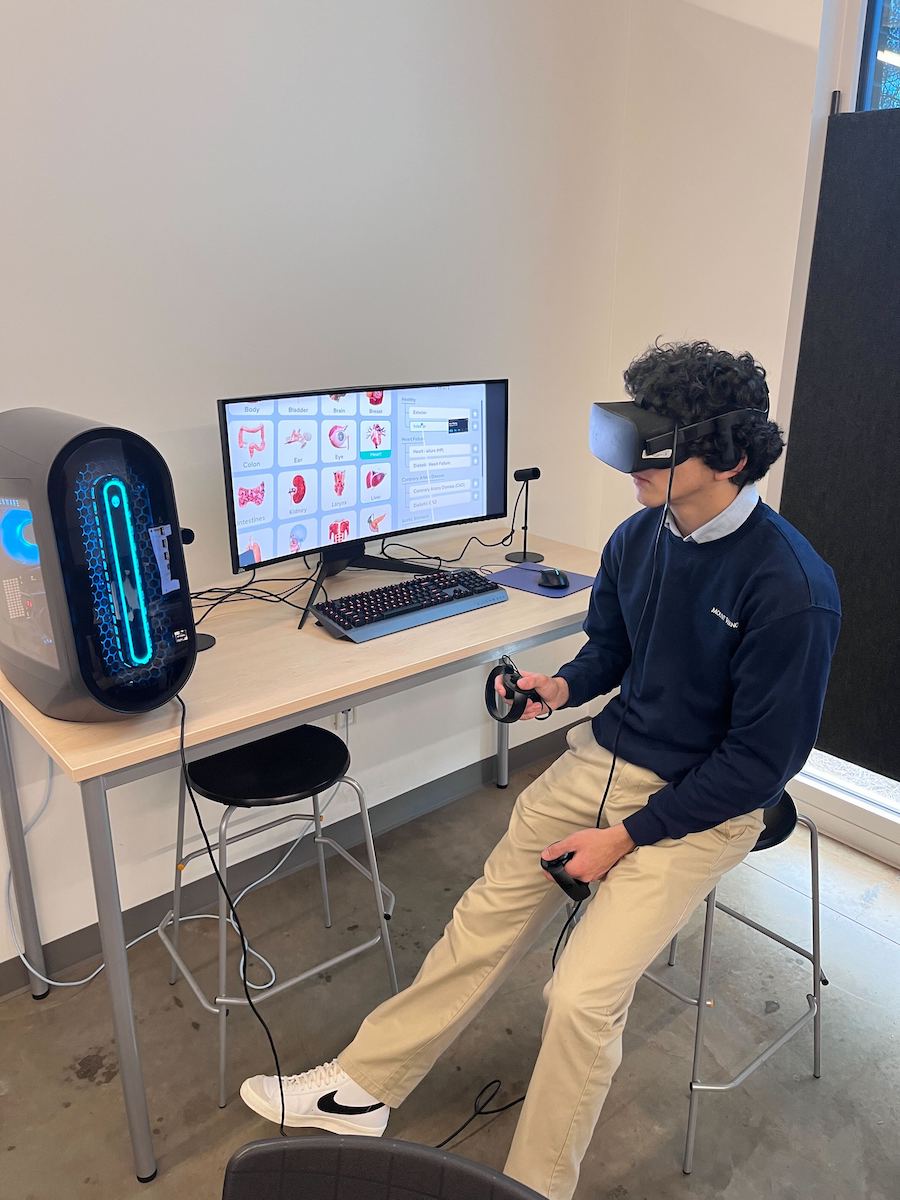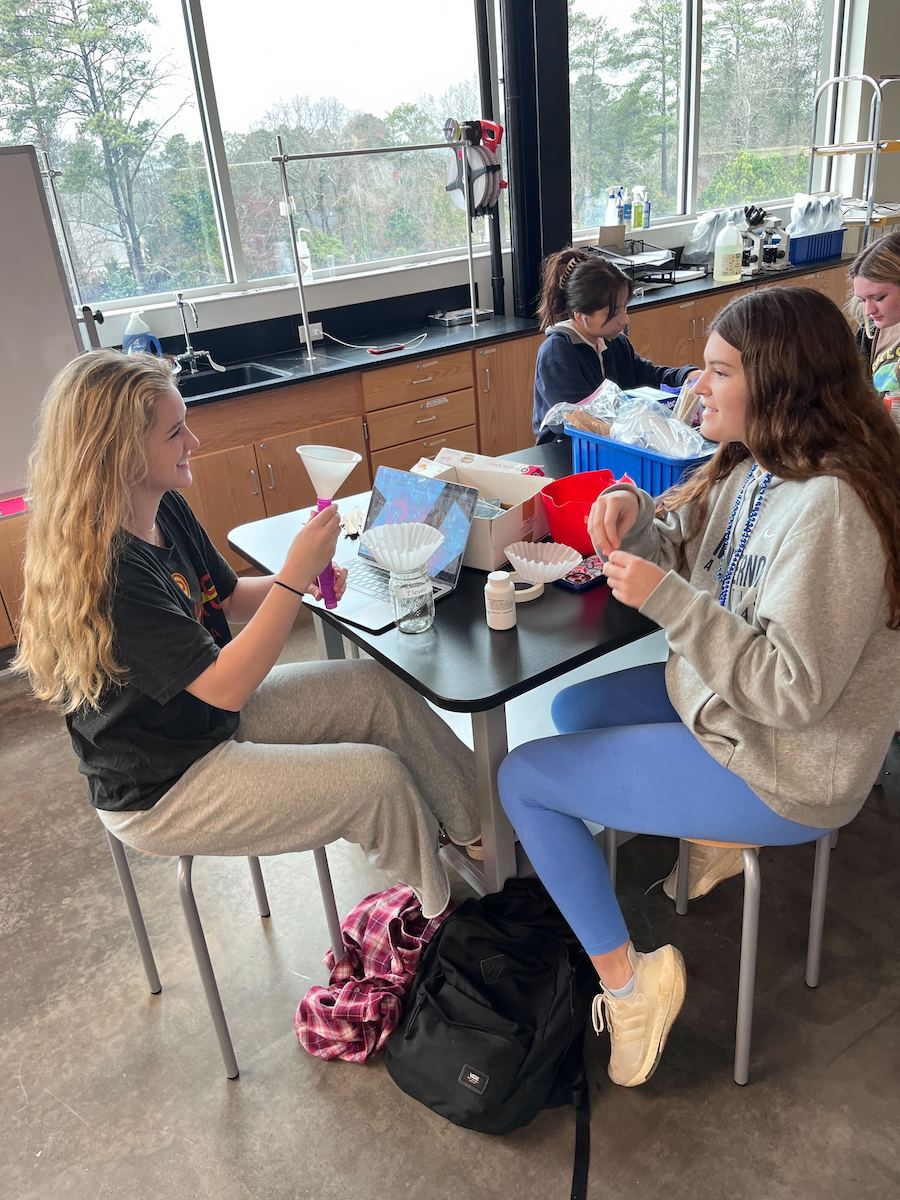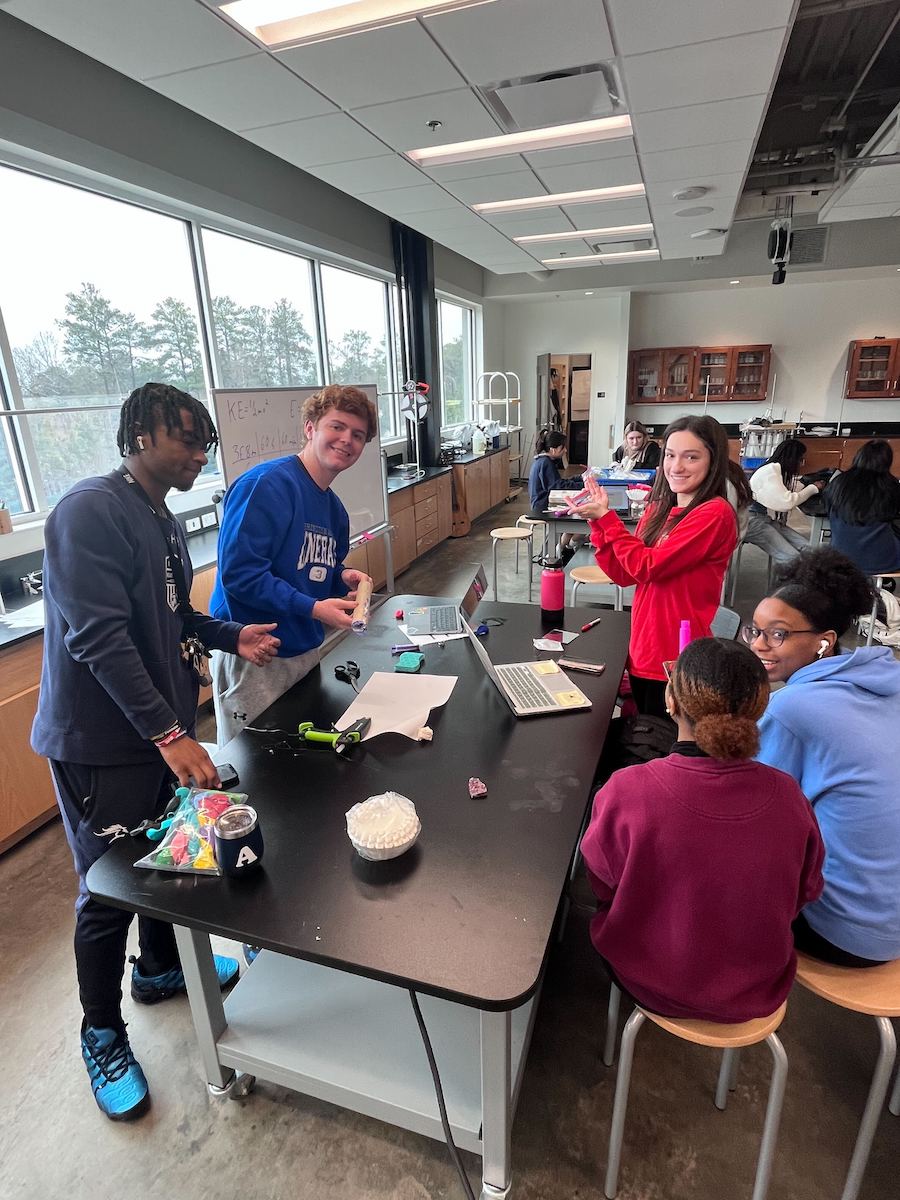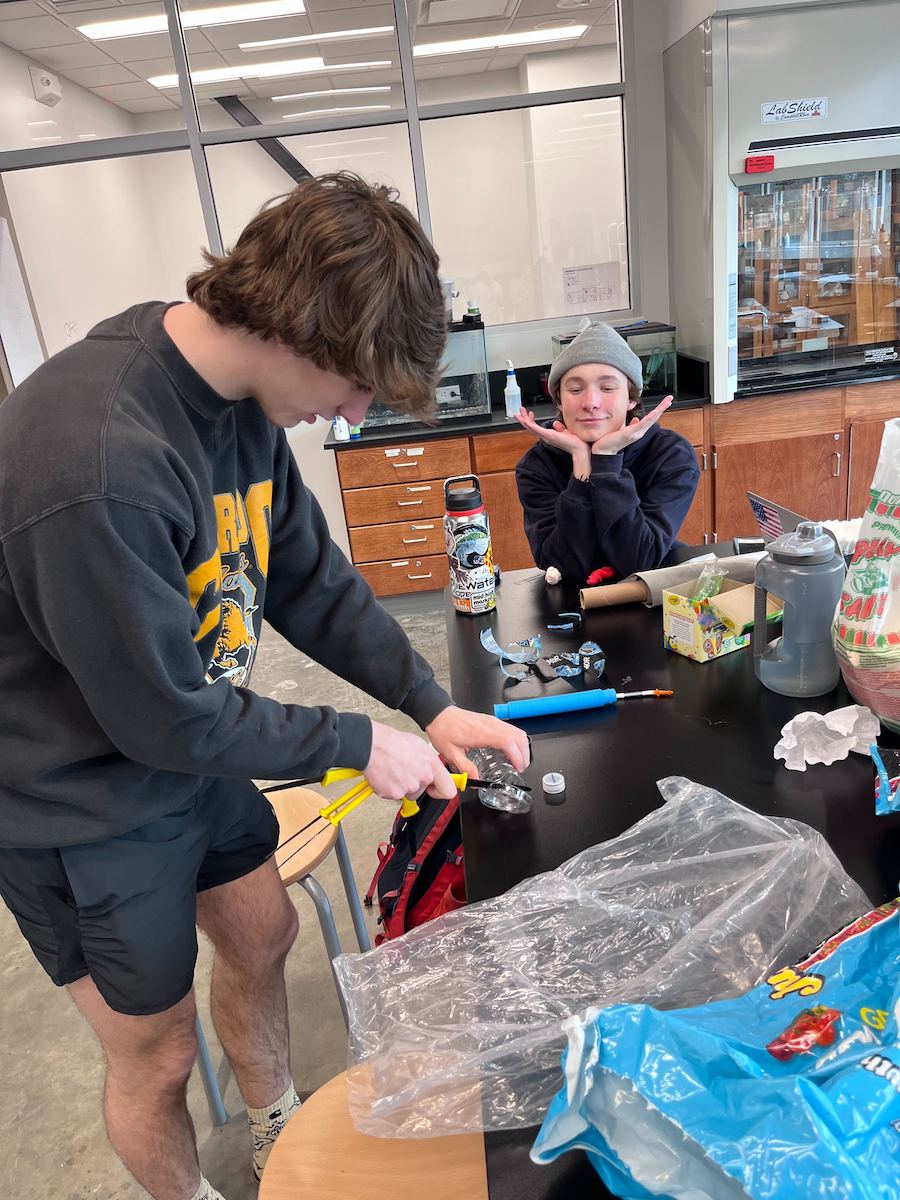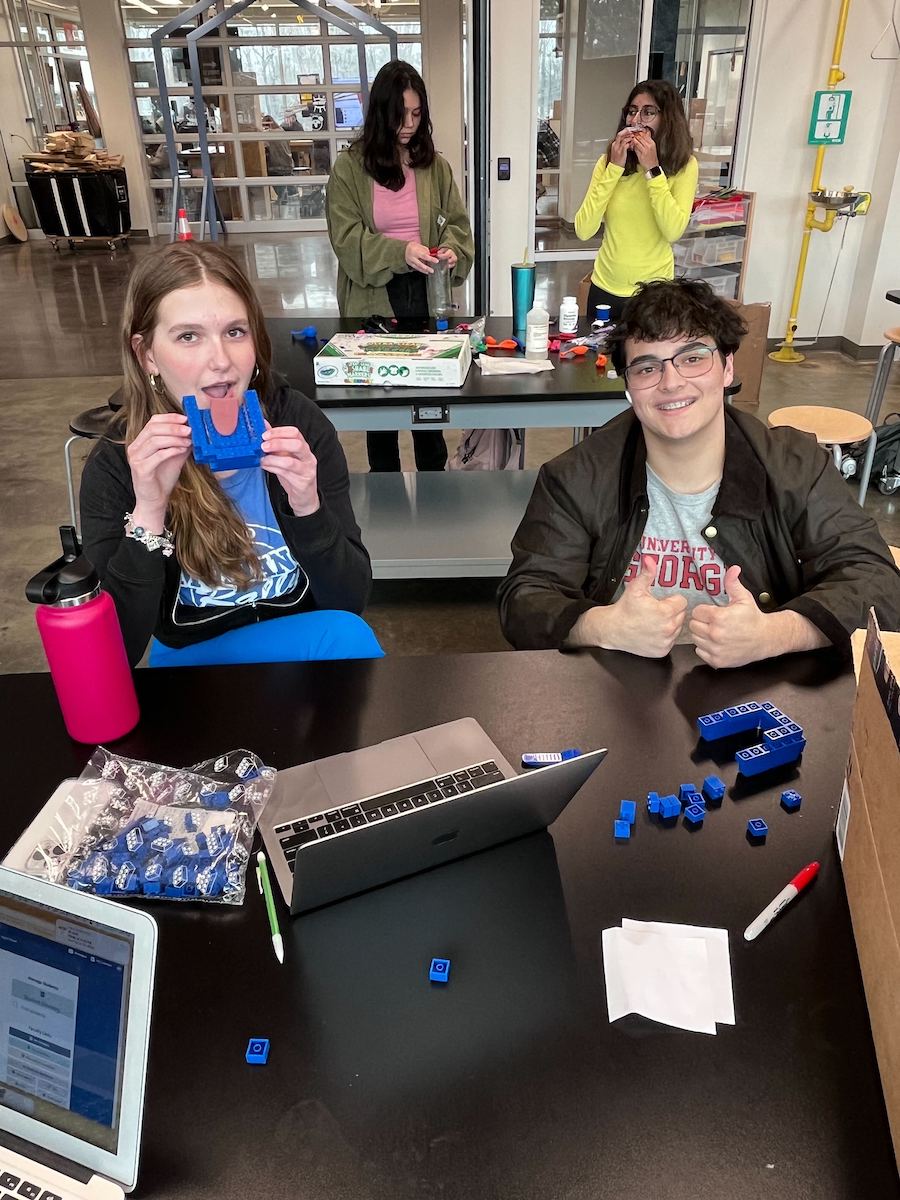In Mr. Hawkins’ Anatomy: Subdermal Warfare class, students are starting with questions to explore how disease affects the systems of the human body. Using a QFT (Question Finding Technique) session to kick things off, students have been using Virtual Reality to research, develop working models of the digestive system, help answer their questions, and hold each other accountable for their learning.
At the beginning of the MOD, students were asked to work within their table groups and write down questions and areas of interest they wanted to focus on throughout the course. Lyndsey Franklin, Class of 2023, and her group wondered what would happen if the mouth was affected by disease. Lyndsey explained, “We studied the mouth, tongue, and salivary glands. All of these aid in digestion. If somehow the mouth was damaged to where it could no longer fight bacteria, it would then travel down to the stomach which is prepared to kill some bacteria but not enough to eliminate it the way the mouth is designed to, causing tooth decay, sickness, and infection.” Another group was curious to learn different ways wounds are cleaned and how those cleaning methods affect rates of healing. Other groups were interested in different aspects of cancer and what scientists and doctors are doing to treat them.
Mr. Hawkins was impressed with the level and range of the student inquiries, “These questions are more authentic because they are student generated. But in spending the time to actually answer those questions the students learned more about anatomy and the systems in a depth that I wouldn’t be able to do if I just gave them worksheets and tests and taught them traditionally.”
The culminating event for the class is for students to recreate the digestive system. Each group was tasked to recreate their chosen field of study, the specific section or organ of the system they first questioned. Mr. Hawkins explained the vision for the work, “You have students doing accessory organs like the liver or pancreas that will overlap with the stomach and the duodenum.”
To better understand the digestive system, students did research projects and presentations on the impact of disease and ailments on their specific organs in preparation for building their models. Some students studied acid reflux, others studied different viral infections. Jonathan Gallinaro, Class of 2024 explained what his group discovered, “We chose the large intestine. Throughout our research, we learned that it is the last step in the digestion process but is prone to disease. IBS, for example, is common and hard to control. While presenting, we received feedback that we should compare the human large intestine to an animal’s. So we chose to study snakes. If you think about it, it’s super interesting because they swallow such large items compared to their body and we were able to study how that affects their digestion.” Sydney Smith, Class of 2025 shared how peer feedback helped in her group’s process, “It was interesting to see other people’s presentations. My group got ideas about things to add or change based on feedback and looking at other people’s presentations. I also noticed that a lot of people didn’t know much about my topic so it was nice to be the expert in the room.”
To gain additional perspective, the class visited the VR lab to get an in-depth look at how each part of the digestive system works together. Each group focused on its own organ and part of the overall system, and how different parts affected how their part worked. Intrigued by the experience, many students explored different parts of the body in addition to the ones they were assigned.
This week, students will finally start to build their working models of the digestive system. Mr. Hawkins reminded his class, “These are not models in terms of looking like a digestive system, it’s in terms of working like one. Anyone can pull a model of the digestive system and point out the parts of it. But to actually make it accurately simulate functions of that system, that’s what we are looking to do.”
To help achieve the functioning model, he shared, “We bought digestive enzymes, tubes, and everything the students thought they needed to make this work. It’s very much in the vein of college readiness and real-world applications”
Each group will “connect” their models by taking the digested product from one end of their process and giving that to the next group to put into their system so that by the end, the students will have gone through the full process of ingestion and digestion with an understanding of how these processes occurred and what is involved in each step. Jonathan is excited to see how his group is going to figure this out, “Since the main function of the large intestine is to filter out the water and vitamins through osmosis to create more solid waste, we thought we could try cotton balls but have suspicions that it won’t work. But we will keep trying and reiterating until we know we won’t let the rest of the class down.”
